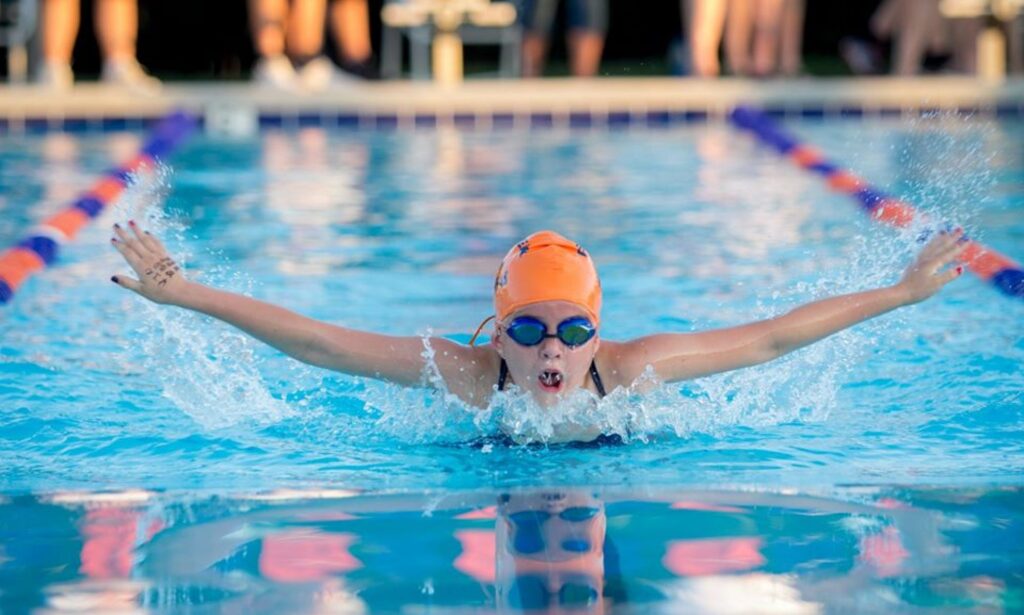PRIVATE POOLS
Pools can be either indoors or outdoors. They can be of any size and shape, and inground or above ground. Most pools are permanent fixtures, while others are temporary, collapsible structures.
A ground swimming pool:-
Private pools are usually smaller than public pools, on average 3.7 m × 7.3 m (12 ft × 24 ft) to 6.1 m × 12.2 m (20 ft × 40 ft) whereas public pools usually start at 24 m (80 ft).Home pools can be permanently built-in, or be assembled above ground and disassembled after summer. Privately owned outdoor pools in backyards or gardens started to proliferate in the 1950s in regions with warm summer climates, particularly in the United States with desegregation. A plunge pool is a smaller, permanently installed swimming pool, with a maximum size of approximately 3 m × 6 m (10 ft × 20 ft).
Construction methods for private pools vary greatly. The main types of in-ground pools are gunite shotcrete, concrete, vinyl-lined, and one-piece fiberglass shells.
Many countries now have strict pool fencing requirements for private swimming pools, which require pool areas to be isolated so that unauthorized children younger than six years cannot enter. Many countries require a similar level of protection for the children residing in or visiting the house, although many pool owners prefer the visual aspect of the pool in close proximity to their living areas, and will not provide this level of protection. There is no consensus between states or countries on the requirements to fence private swimming pools, and in many places they are not required at all, particularly in rural settings.


PUBLIC POOLS
Public pools are often part of a larger leisure center or recreational complex. These centres often have more than one pool, such as an indoor heated pool, an outdoor (chlorinated, saltwater or ozonated) pool which may be heated or unheated, a shallower children’s pool, and a paddling pool for toddlers and infants. There may also be a sauna and one or more hot tubs or spa pools .
Many upscale hotels and holiday resorts have a swimming pool for use by their guests. If a pool is in a separate building, the building may be called a natatorium. The building may sometimes also have facilities for related activities, such as a diving tank. Larger pools sometimes have a diving board affixed at one edge above the water.
Many public swimming pools are rectangles 25 m or 50 m long, but they can be any size and shape. There are also elaborate pools with artificial waterfalls, fountains, splash pads, wave machines, varying depths of water, bridges, and island bars.
Children’s pool at the Indian Swimming Pool
Some swimming facilities have lockers for clothing and other belongings. The lockers can require a coin to be inserted in a slot, either as deposit or payment. There are usually showers – sometimes mandatory – before and/or after swimming. There are often also lifeguards to ensure the safety of users.
Wading or paddling pools are shallow bodies of water intended for use by small children, usually in parks. Concrete wading pools come in many shapes, traditionally rectangle, square or circle. Some are filled and drained daily due to lack of a filter system. Staff chlorinate the water to ensure health and safety standards.


COMPETITION POOLS
A simplified diagram of the FINA long course swimming pool standard, used at the World Championships and Summer Olympics
The Fédération Internationale de la Natation (FINA, International Swimming Federation) sets standards for competition pools: 25 or 50 m (82 or 164 ft) long and at least 1.35 m (4.4 ft) deep. Competition pools are generally indoors and heated to enable their use all year round, and to more easily comply with the regulations regarding temperature, lighting, and automatic officiating equipment.
An Olympic-size swimming pool (first used at the 1924 Olympics) is a pool that meets FINA’s additional standards for the Olympic Games and for world championship events. It must be 50 by 25 m (164 by 82 ft) wide, divided into eight lanes of 2.5 m (8.2 ft) each, plus two areas of 2.5 m (8.2 ft) at each side of the pool. Depth must be at least 2 m (6.6 ft).[28]
The water must be kept at 25–28 °C (77–82 °F) and the lighting level at greater than 1500 lux. There are also regulations for color of lane rope, positioning of backstroke flags (5 metres from each wall), and so on.[28] Pools claimed to be “Olympic pools” do not always meet these regulations, as FINA cannot police use of the term. Touchpads are mounted on both walls for long course meets and each end for short course.
A pool may be referred to as fast or slow, depending on its physical layout.[29] Some design considerations allow the reduction of swimming resistance making the pool faster: namely, proper pool depth, elimination of currents, increased lane width, energy absorbing racing lane lines and gutters, and the use of other innovative hydraulic, acoustic and illumination designs.
Pool tiles’ longer rectangular edges may be parallel to the pool’s long sides to help swimmers orient themselves.
In the last two decades, a new style of pool has gained popularity. These consist of a small vessel (usually about 2.5 × 5 m) in which the swimmer swims in place, either against the push of an artificially generated water current or against the pull of restraining devices. These pools have several names, such as swim spas, swimming machines, or swim systems. They are all examples of different modes of resistance swimming


